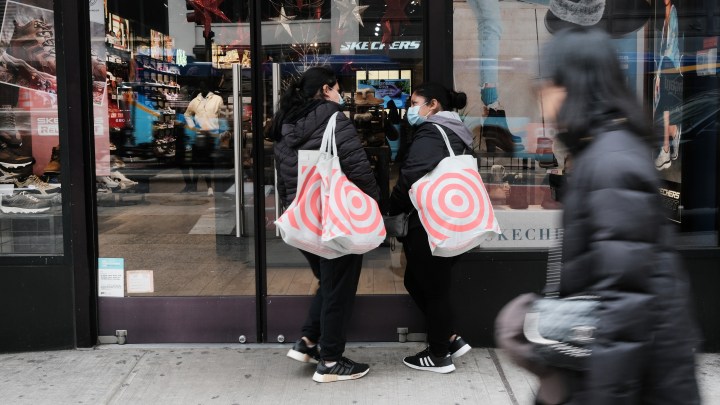
Buy now, pay later services are flourishing

‘Tis the season to buy. Or, increasingly, buy now and pay later.
Purchases through buy now, pay later platforms like Klarna and Affirm were up more than 20% from last year on Cyber Monday, according to a new report from Adobe Analytics. These are financial companies that partner with retailers to let customers pay in installments, usually without a credit check — like layaway, but you receive the product before you make all the payments.
Back when it was called layaway, people didn’t exactly brag about using payment programs. But today on social media, there are buy now, pay later video trends: TikToks with captions that say something like, “When you tell him you only spent $25 but that was just the first payment,” set to Taylor Swift songs.
“Yeah, I think it’s an entirely different generation that’s using buy now, pay later. They probably don’t even know what layaway was,” said Joel Rampoldt, a managing director at AlixPartners.
Millennials and Gen Z are the biggest users, Rampoldt said. And that the way they talk about payment programs shows they have a different attitude about them; they’re using the companies as a budgeting alternative to credit cards they may be scared of or may not have access to.
In fact, almost 90% of payments processed by the platform Afterpay are made with debit cards.
“This is telling you that the consumer wants to use the money that they have,” said Zahir Khoja, Afterpay’s North America general manager.
And hopefully they do have that money, because Afterpay customers usually spend more of it. Average shopping carts increase by 20% at clothing retailers with Afterpay, Khoja said.
Most of the uptick in buy now, pay later has to do with the pandemic explosion in online shopping, said Sheridan Trent, research analyst at The Strawhecker Group.
“If you’re doing more of your shopping online it presents more of an opportunity to use buy now, pay later,” she said.
There’s also the push this year to shop earlier instead of spreading purchases and finances out over the season. There’s also the economic uncertainty households have been facing during the pandemic.
“And so I think this seems like one way to try to keep a cushion in your account,” Trent said.
These payment programs can be a good alternative for some — as long as they keep track of payment schedules, Trent said. Otherwise, they may be hit with penalties.
There’s a lot happening in the world. Through it all, Marketplace is here for you.
You rely on Marketplace to break down the world’s events and tell you how it affects you in a fact-based, approachable way. We rely on your financial support to keep making that possible.
Your donation today powers the independent journalism that you rely on. For just $5/month, you can help sustain Marketplace so we can keep reporting on the things that matter to you.

















